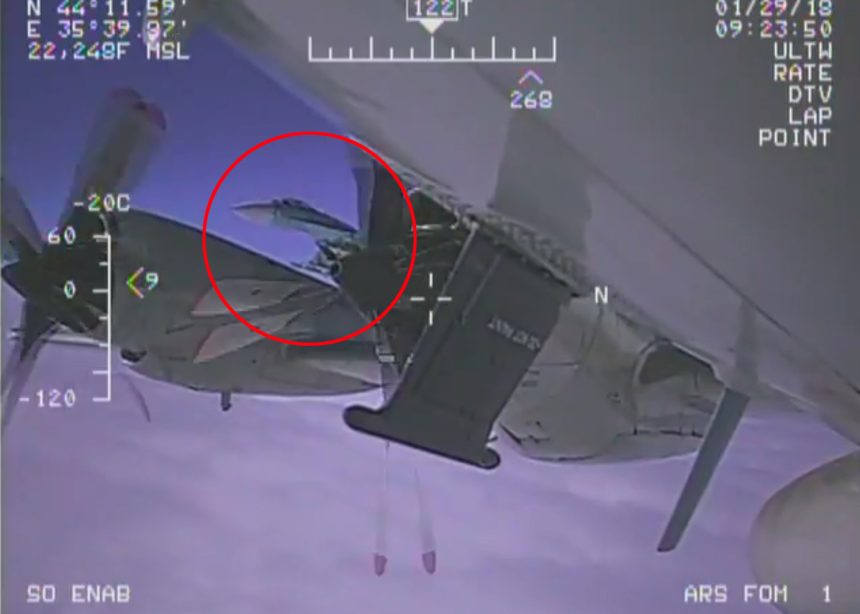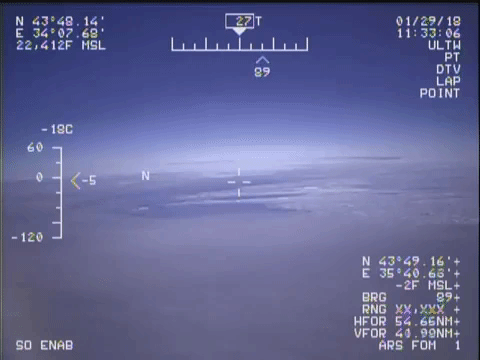The new videos show the Russian Flanker flying close to the EP-3E Aries II. Still, the clips don’t show the most dangerous maneuver.
As you already know by now, on Jan. 29, a U.S. EP-3 Aries II intelligence gathering aircraft flying in international airspace over the Black Sea as FARM26 was intercepted by a Russian Su-27. During the intercept, the Russian Flanker allegedly performed an unsafe maneuver: the Su-27 closed to within five feet and crossed directly through the EP-3’s flight path, causing the EP-3 to fly through the Su-27’s jet wash.
Yesterday, the U.S. Navy released the footage of the Su-27 “buzzing” the Navy spyplane. Although the Flanker appears to be quite close to the EP-3E, as explained, the clip does not help determining the distance from the EP-3E’s wingtip.
Today, the 6th Fleet released more videos of the dangerous interaction along with some interesting comments (highlight mine):
The videos show the Russian Su-27 maneuvering around the U.S. Navy EP-3 in close proximity and in varying positions.
While not shown in the released imagery, during the intercept, the Russian Su-27 executed a hard right-to-left turn from the U.S. EP-3’s right side with an excessive closure rate and came within five feet of the EP-3’s right wingtip. The Russian Su-27 then proceeded to enter the flight path of the U.S. Navy EP-3, crossing within 10 feet and executing a sharp dive below, which resulted in violent turbulence for the U.S. EP-3 and its crewmembers.
“These videos show the Russian Su-27 intercepting the EP-3 from a very close position, at the same altitude, and with an estimated wingtip-to-wingtip horizontal separation as little as five feet at times,” said U.S. Navy Capt. Bill Ellis, commander of Task Force 67. “For the Russian fighter aircraft to fly this close to the U.S. Navy aircraft, especially for extended periods of time, is unsafe. The smallest lapse of focus or error in airmanship by the intercepting aircrew can have disastrous consequences. There is no margin for error and insufficient time or space for our aircrews to take corrective action,” said Ellis.
Here are the additional clips. Beware, the zoom affects the perception of the distances between the two aircraft.
H/T to our friend @CivMilAir for the heads up









